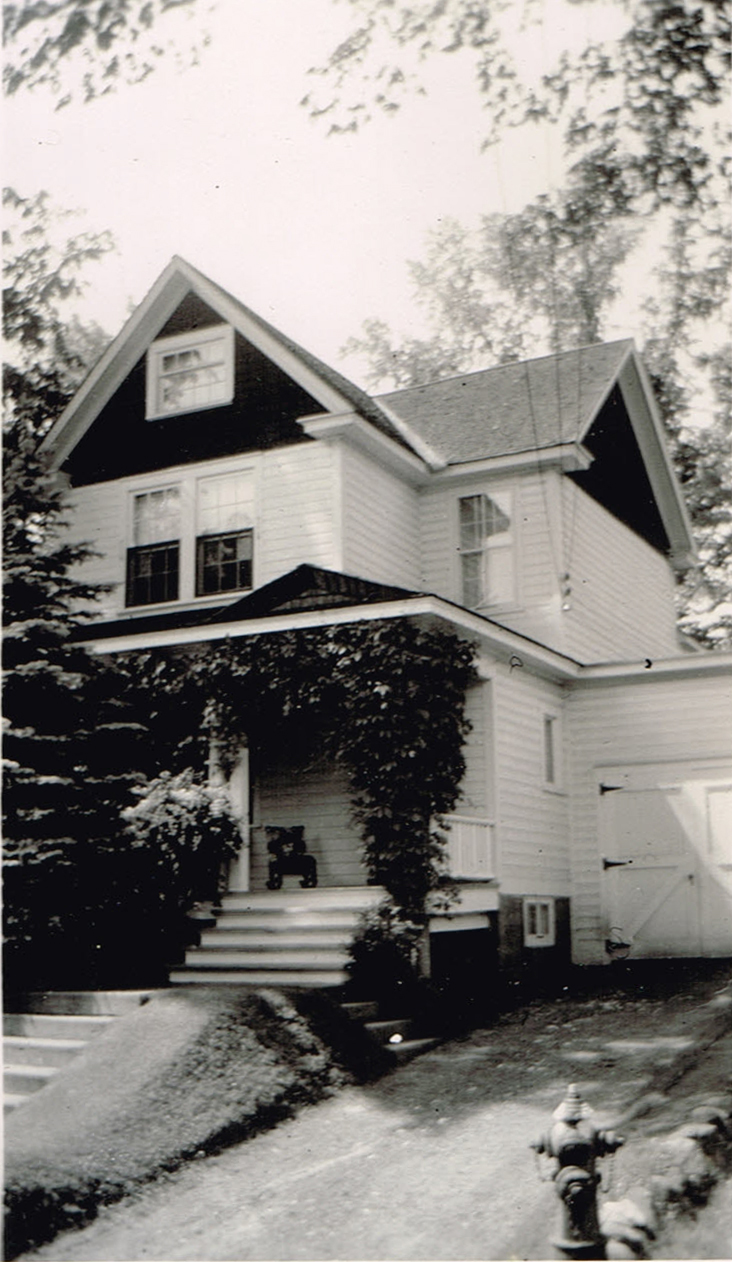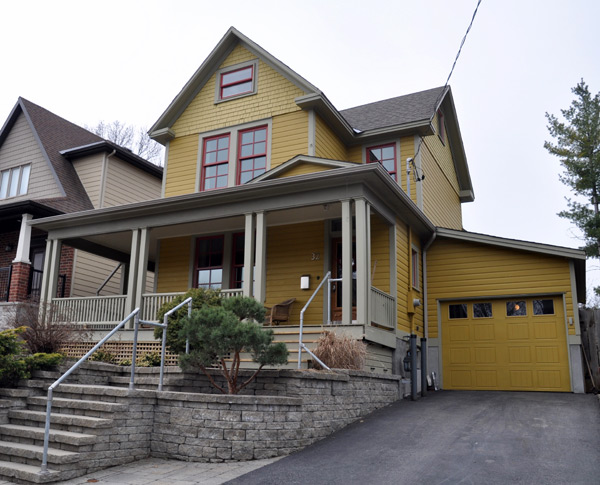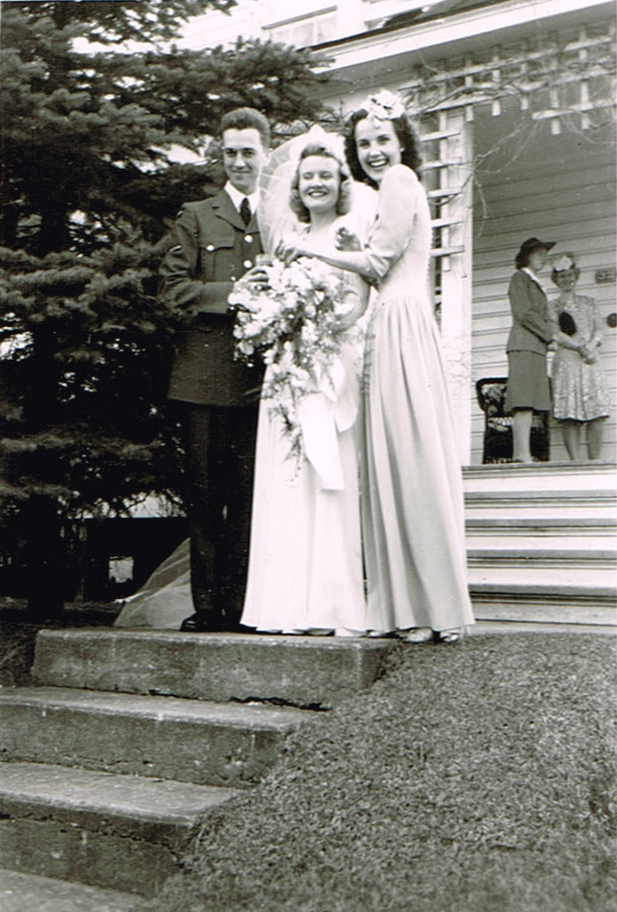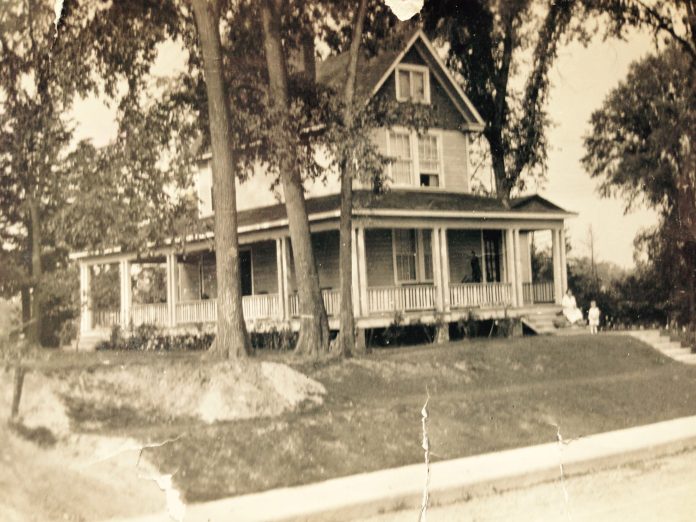As time passes, history begins to fade. The lives and events, the people and places of years gone by begin to disappear in the fabric of time. What can be left behind are an artifact or two, a photograph, or even a structure, a house. The details of its past, its significance, may be long gone, and what may remain are rumours, tidbits of information, or perhaps nothing at all. Researching any older object, be it a large home or a small black and white photo has significant challenges. Often even extensive investigation yields no information. The world of historical research is filled with dead ends. However, when the dots connect and a full story emerges, the results can be exciting.
On Granville Avenue in Wellington Village, a street that once marked the western border of Ottawa, stands an impressive old home, unmistakeable for its yellow wood siding, large country-style wrap-around porch and unique construction on Granville’s hill. 32 Granville is one of the many houses in Kitchissippi that undoubtedly has a storied history, another case of “if only the walls could talk.”

It is this home where the seeds of an important story begin.
One is a tale shared by elderly neighbours that indicated the house at 32 Granville had once been moved. Another, that one of the first farmhouses built in the area still existed, hidden in the cozy streets of Wellington Village. Could this be it? It’s a perfect mystery for a local historian. Extensive research of key details hidden in old, dusty historical record books would reveal clues that may be just as good as talking walls.
The Stewart family were the pioneers of Wellington Village. Their family farm was the only development the neighbourhood saw until after WWI. They arrived in the early 1830s and built a modest stone farmhouse on Wellington on the southeast corner of Julian. It stayed in the family until it was demolished in 1961. The two eldest sons – Ranald and Alex – both were married a week apart in 1873. Both built new houses on the farm: Alex built a wood-frame house on the east side of Warren (between 1873-74), and Ranald built a brick house near the western edge of the farm, on the west side of Granville (1871-72).
Ranald later moved his family to Saskatchewan, and in 1893, Alex sold the entire property to the Ottawa Land Association, all except for a small parcel of land on Wellington which included the original stone house, in which his sister Wilhelmina (Mrs. Robert Sparks) remained.


The OLA continued to maintain the two other Stewart homes, renting them to various tenants while they awaited an opportune moment to subdivide the farm and sell lots. As covered in this column previously a large auction was held in May 1919 to sell off all 500+ lots in Wellington Village south of Wellington. It is thanks to the details of this auction that the original location of these two houses may be pinpointed. Exactly two lots were not part of the 1919 auction: the lot on which 51 Hampton now stands, and most importantly, the lot upon which 8 Granville now stands. Directories, maps and aerial photos confirm the two Stewart sons’ houses did indeed exist in roughly these locations until 1919. The dots begin to connect.
William Ornan Miller was a contractor by trade, and built houses throughout the area. He was one of the buyers at the OLA auction in 1919, purchasing lot 2743 on the west side of Granville for $300 (lots on Granville ranged from $225 to $475). William and his wife Eva had one child. Their daughter Shirley was born that same year, 1919. Records reveal the Millers took out a mortgage that December for $2,500. Further records (including an aerial photograph from the fall of 1920) show a house standing on this lot by the summer of 1920.
The Miller family kept the home until 1965, and so a logical step was to attempt to track down a descendant, who might be able to provide details. Extensive digging would pay off with the amazing discovery that 96-year-old Shirley Miller (now Beaudet) was alive and well. Shirley confirmed that her father was an accomplished carpenter, and that perhaps his proudest job had been “renovating an old farm house,” – their home at 32 Granville – into which she moved as an infant. She related stories of Granville when the house was the only one on the street, when the sidewalks were new, when the unpaved street was nothing but mud. She spoke of parties her parents hosted on the large porch, which she watched her father build 90 years ago. She was allowed (“spoiled, since I was an only child”) to sneak downstairs and watch her parents and friends dance to the sounds of the Victrola in the night air. Her wedding photos, taken on the front steps in 1943, show a young uniformed Air Force officer who only months later would be lost overseas.

While Shirley was unable to confirm if the house had been moved prior to 1920, it is a certainty it had been. Long-time Mayfair Avenue resident Alfred Bassett died in 1984 just shy of his 102nd birthday, but had told neighbours he witnessed the home being moved by horses on logs. Once again, the dots connect. It becomes evident that William acquired the lot and obtained the mortgage that winter to acquire the old house from the OLA, have it moved onto a new poured concrete foundation, then worked diligently to restore it.
32 Granville is an easy home to fall in love with, just ask its present owners Gillian Salmond and Bob Furitsch. The couple suspected the home had moved, as there is obvious evidence in the basement that the house had previously resided on a broader foundation.

Already an eye-catching home on one of Ottawa’s prettiest streets, Gillian and Bob have taken great efforts to preserve the home’s original features. This beautiful home has remained virtually unchanged for the past 100 years. Its wonderful history is a lasting memorial to the very earliest days of Kitchissippi.
It is rare that a story can be pieced together this successfully through historical research, particularly involving the significant events and relationships that it does. The revelation that a previously hidden 145-year-old home, built by the first settlers of the neighbourhood still exists, instantly establishes one of the most significant landmarks of the community, one which could have been demolished at any time without anyone realizing it.
Dave Allston is the historian behind The Kitchissippi Museum, which can be found at kitchissippimuseum.blogspot.ca.
